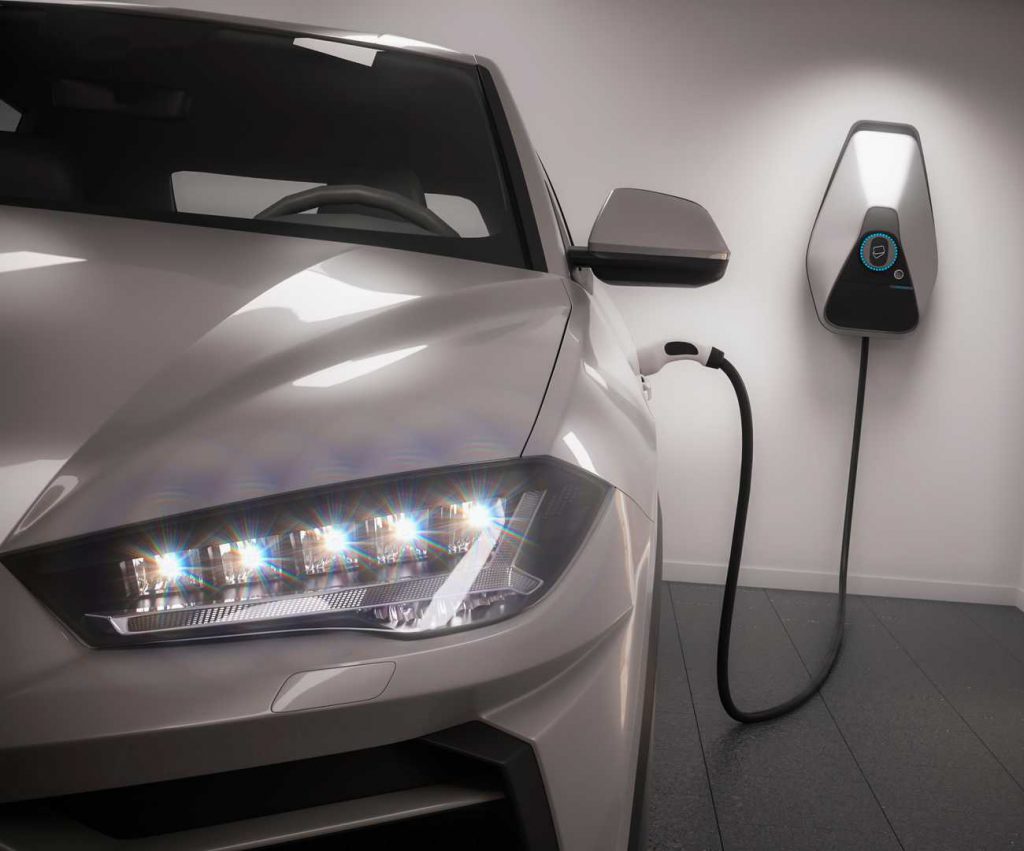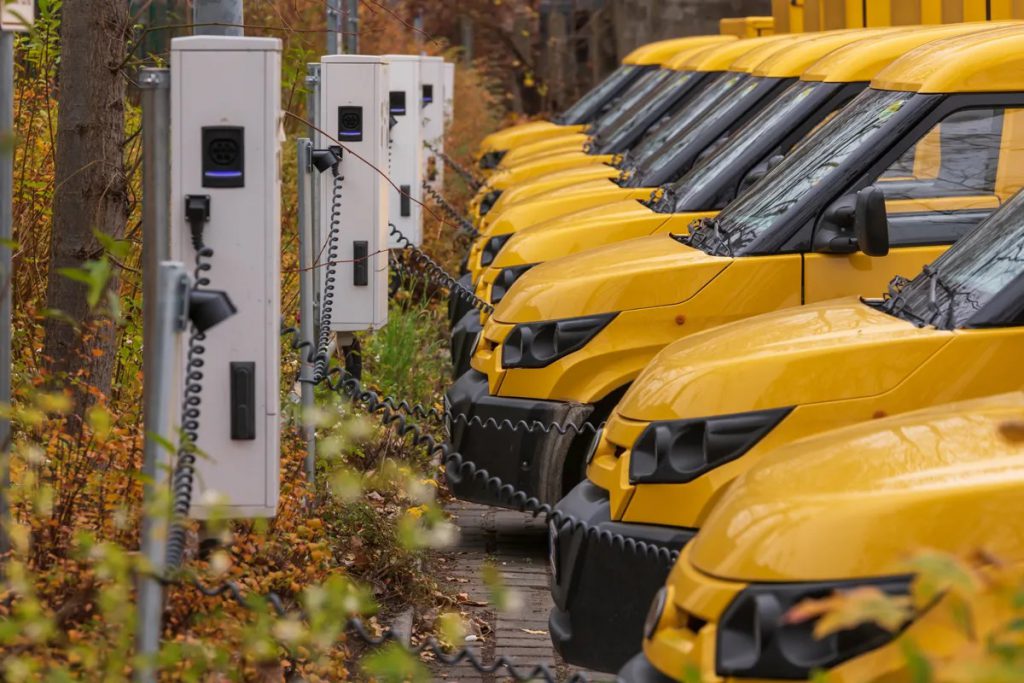
20.10.2021

AVERE welcomes the European Commission’s initiative to revise the Energy Performance of Buildings Directive (EPBD), which will be key to enabling home and destination charging in the EU. Doing so will help taking pressure off public charging networks, make charging more convenient, lead to economic savings both for EV owners and across the broader charging ecosystem, and allow for smart integration of EVs into the energy system.
EV users tend to follow a charging hierarchy that begins at home. Most passenger cars remain parked overnight, making home charging the most convenient, and often cheapest, option for many users. 75% of EV owners in Europe had access to home charging in 2020, and while this share is set to decline in coming years, home charging will still cover 40%-45% of all charging needs in 2030. Similarly, many EV users charge while at work (24% share projected for 2030), or top up while visiting destinations such as malls and supermarkets.
The revised EPBD will therefore constitute an opportunity to strengthen the very backbone of the European charging ecosystem, complementing the efforts on public charging under the proposed revised Alternative Fuels Infrastructure Regulation (AFIR). To achieve an accelerated rollout of EVs in line with climate neutrality in 2050, it will be important to maximise the contribution of all kinds of charging infrastructure in Europe, going beyond public charging.
In the context of the upcoming revision, AVERE thus calls on revising the requirements for pre-cabling and charging points, making parking spaces in the EU’s entire building stock ready for the expected rapid uptake of EVs in coming years. It will also be imperative to establish a “right to charge” for residents of multi-dwelling buildings, ensuring consumers can never be denied the opportunity to charge at home, and to require smart charging capabilities.
AVERE’s Recommendations
1. Set ambitious targets for home and destination charging infrastructure in EU buildings
With the objective of future-proofing the European building stock for the rapid EV uptake expected in coming years, AVERE recommends raising the targets for both residential and commercial buildings under the revised EPBD.

Notably, all parking spots belonging to all EU new and existing buildings with more than ten parking spaces should be pre-equipped with appropriate ducting, cabling and electrical installations for the installation of EV charging points by 2030, with an intermediate target set for 2027. Furthermore, all parking spaces in new or renovated buildings from entry into force of the directive should be ready for the installation of EV charging points.
Exemptions, e.g. the exclusion of renovated buildings for which the renovation doesn’t cover the car park or the electricity infrastructure of the building, should be removed. Lastly, a mandatory minimum number of installed charging points should be prescribed for both new and existing buildings with more than 10 parking spaces. This should be in line with EV market uptake, however at least 10% in 2025, 20% in 2030, and 40% in 2035. These target levels should be subject to a Commission review by 2027. Member states should be subject to reporting requirements every two years, making transparent at a minimum the share of parking spaces pre-equipped for charging infrastructure, and the number and capacity of actual chargers installed.
2. Tackle barriers to charging infrastructure installation and establish a “right to plug”
The revised EPBD should also tackle existing barriers for installing charging points, particularly in multi-residential buildings. At present, drivers in many member states still have to request formal approval from their landlord or the general assembly of tenants before installing a recharging point, or have to pay for rewiring the whole building if they are the first EV users in their building. This prevents them from utilising the most convenient charging location – their own home – and may deter them from buying an EV altogether. Therefore, crucially, an EU-wide “right to plug” should be established, ensuring that every EV owner with a parking space in condominiums is entitled to the installation of a charging point.
Permitting and installation procedures should be streamlined. Excessive bureaucratic hurdles often imposed at national and local level should be removed (some examples are included in Annex I). To this end, a set of basic harmonised technical standards across the EU should be established. The European Commission should also publish guidance on best practices, such as the establishment of centralised regional accessible websites and portals. Maximum time frames should be set for decisions on the approval of charging points.
3. Facilitate smart charging
Home charging, due to the extended periods in which vehicles are stationary, is the prime opportunity to make ideal use of smart charging. The Commission’s proposed revision of the Renewable Energy Directive mandates that all new non-public normal-power chargers should support smart charging functionalities, with V2G capabilities where appropriate.
Building on this requirement, the revised EPBD should mandate smart charging readiness for all new and renovated charging infrastructure in residential and non-residential buildings, requiring chargers to be integrated in smart systems, such as buildings’ energy management systems or load management systems. Furthermore, through both RED and EPBD, regulators should encourage the uptake of V2G wherever possible, including through economic incentives, and work towards a mature legislative and technical regulatory framework allowing for the quick deployment of V2G technologies once uptake takes place on a broader scale.

4. Ensure appropriate financing
Existing requirements on Member States to establish financing schemes to fund energy efficiency projects should be further strengthened and be made conditional on the fulfillment of minimum criteria in terms of charging access. They should, in particular, provide support for V2G smart charging to enable scale and market uptake.

5. Include heavy-duty vehicles
Lastly, to support the installation of sufficient high-power charging infrastructure for heavy duty vehicles, the scope of the EPBD should be extended to cover new or renovated private truck depots, as well as logistic hubs and distribution centres, requiring them to be ready for future battery electric truck charging (350 kW+ chargers). This should include pre-equipment as well as an appropriate grid connection.
Conclusion
The Energy Performance of Buildings Directive is a crucial piece of legislation to ensure the expected rapid rollout of EVs is supported by a fit-for-purpose, convenient and future-proof charging infrastructure across the EU. AVERE stands ready to engage with European policymakers on how to ensure an ambitious revision that will allow drivers to charge where it is most convenient for them, while yielding major economic savings across the energy system.
Annex I: National hurdles to installation of charging infrastructure
I. Mandatory shutters in France and Italy
Charging stations’ safety standards have been defined under IEC61851. The French regulation requests a supplementary protection on charging stations’ sockets: the shutter. Shutters are costly and require frequent maintenance due to their fragility, but their added benefit in terms of safety is doubtful and should be further investigated.
II. Type E ADVENIR Subsidy in France
When installing charging stations in France, the inclusion of a Type E (and T2/T2S, excluding attached cables under 22kW) connector is mandatory to obtain the ADVENIR subsidy. The type E connector is mainly targeted at small and micro-mobility, which should not be blocking the parking spot and use energy circuits dedicated to EVs. The provision also adds pressure on manufacturers to adapt their products for the french market, so that installers can obtain the grant.
III. Eichrecht for public parking (EPBD segment: offices) – Germany
Provisions under the German Eichrecht often add significant compliance cost for charging infrastructure operators and backend providers, and make e-roaming in particular difficult to realise. While AVERE supports the intention of the Eichrecht to increase consumption transparency for the end customers, EV charging requires a more harmonised approach across Europe.
IV. Fire safety concerns and EV bans
Despite the fact that EVs burn significantly less frequently and the German firefighters’ association has repeatedly reaffirmed that it is well capable of extinguishing battery fires, bans on EV parking were recently imposed in two German municipalities – Kulmbach in Bavaria, and Leonberg in Baden-Wurttemberg. The bans, which received widespread press coverage, followed incidents of traditional internal combustion engine vehicle fires, prompting concerns with local authorities that similar fires in EVs may prove difficult to extinguish.

